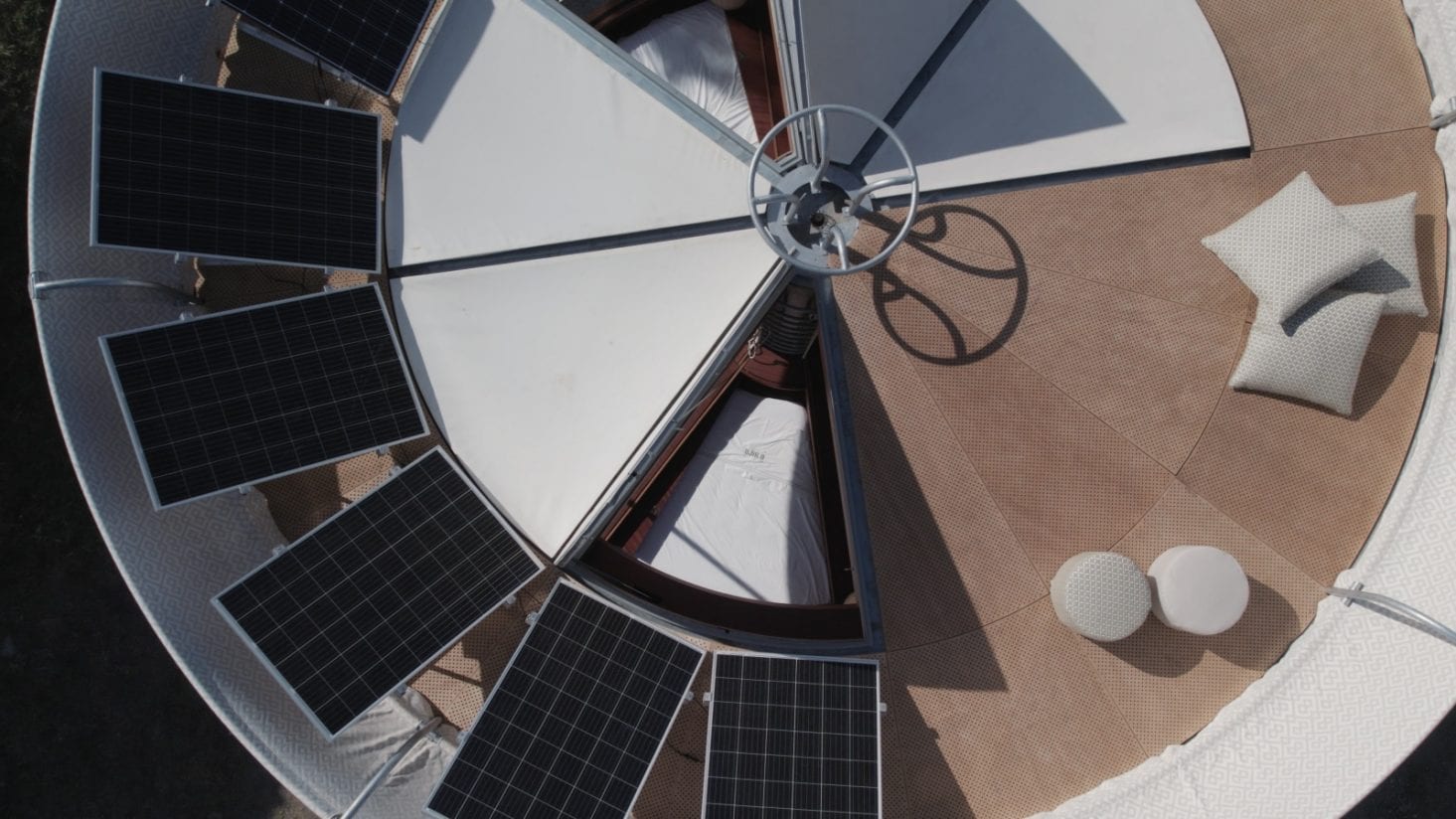Casa Ojalá Becomes a Reality
What was considered an innovation in luxury travel by Italian architect Beatrice Bonzanigo has now come to reality through the partnership with Rosewood Castiglion del Bosco in picturesque Tuscany, Italy.
 The collaboration between Casa Ojalá created by the Italian architect Beatrice Bonzanigo and Rosewood Castiglion del Bosco in the heart of the ancient Val d’Orcia, a UNESCO heritage site where simplicity and nature come together seamlessly, has resulted in the first piece of the luxury travel cabin. Since Bonzanigo first showcased the award-winning cabin design back in 2019, she’s teamed up with Ryan Nesbitt to found Casa Ojalá company and now finally the product is being used in the luxury business. Made with flexible cylindrical external walls, the luxury cabin offers the right amount of privacy and yet opens it to the natural surroundings when need be.
The collaboration between Casa Ojalá created by the Italian architect Beatrice Bonzanigo and Rosewood Castiglion del Bosco in the heart of the ancient Val d’Orcia, a UNESCO heritage site where simplicity and nature come together seamlessly, has resulted in the first piece of the luxury travel cabin. Since Bonzanigo first showcased the award-winning cabin design back in 2019, she’s teamed up with Ryan Nesbitt to found Casa Ojalá company and now finally the product is being used in the luxury business. Made with flexible cylindrical external walls, the luxury cabin offers the right amount of privacy and yet opens it to the natural surroundings when need be.
Casa Ojalá was unveiled at the Capanna vineyard, where this structure stands in a field of endless beauty. Casa Ojalá is made from carefully selected timbers, fabrics made from recycled plastic, and handmade ceramic. The structure also integrates photovoltaic panels, a rainwater recovery system, and a black water depuration advanced biological plant, meaning it can be transported to most remote locations.
“Surrounded by the hills that bring peace to the heart, in the 2000 hectares of the Resort of Castiglion del Bosco, Casa Ojala seems to celebrate the surrounding,” said Massimo and Chiara Ferragamo, founders of Rosewood Castiglion del Bosco.
“We are proud to launch, starting in Italy in synergy with Castiglion del Bosco, to offer its guests an absolutely unique chance of enjoying and discovering the wonders of the Hotel”, explains Bonzanigo, President of Casa Ojalá srl.
“Emblem of the future of sustainable luxury, Bonzanigo’s creation could only rise here where our Brunello di Montalcino is born which we describe as a magical location,” declares Massimo and Chiara Ferragamo.

 Manual mechanism composed of ropes handles made of soft natural leather, pulleys, and cranks that roll up and unrolls walls with okumè wood wrapped around a cylinder.
Manual mechanism composed of ropes handles made of soft natural leather, pulleys, and cranks that roll up and unrolls walls with okumè wood wrapped around a cylinder.
“Leonardesque gears, rollable interior walls that dematerialize sliding on invisible binaries, retractable beds, even the toilette, through intriguing hatches, handled by unexpected winches, of stainless steel. Furnishings hiding beneath the mahogany floor, that emerge, hoisted, in lightness. Including the sink whose cover becomes a mirror. A round terrace and an exposed terrace that makes it easier to blend with the surroundings are just part of what Casa Ojala is all about,” describes Bonzanigo.
All Pictures Courtesy Casa Ojala
Photographs by Luca Miserocchi






